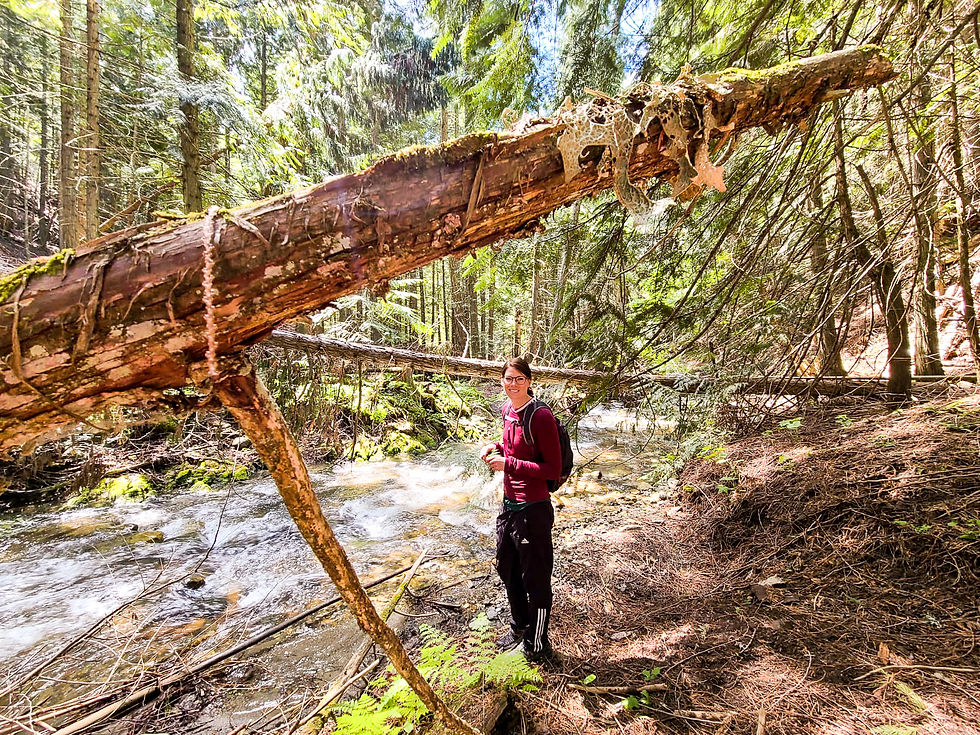Top 10 Tips for Hiking in the Spring
- Melanie Adair

- Mar 15, 2022
- 3 min read
Updated: Oct 12, 2022
Looking for tips on how to hike in the spring? You've come to the right blog! Snow melting, longer days, warmer weather, and all those wildflowers, who isn't itching to get outside, not to mention strapping on those hiking shoes?
*This post may contain some affiliated links and I earn a commission when you click on the links at no additional cost to you.

Tips for Hiking in Spring
Here are 10 tips to help you hike this spring
1. Layers. It may be beautiful and spring weather when you start your hike but don't let that fool you. As you start to ascend, winter will slowly creep back in. The higher you go up, the colder it will become in addition to mornings and evenings still having that crisp coolness to it. Bring layers that are easy to add or remove but DO NOT WEAR COTTON as it will not keep you warm and takes a long time to dry if it gets wet. Stick to synthetic (polyester) or natural (wool) materials as they dry faster, wick away moisture, and are good at insulating.
2. Waterproof outer shell. You never know when those spring showers will happen and when they do, it's always reassuring when you know you've packed the proper gear. A few waterproof outer shells to include in your bag are a jacket, pants, and a rain cover for your backpack. One of the best things about waterproof clothing, it is also windproof.
3. Traction devices. Otherwise known as microspikes or crampons. These devices have spikes at the bottom to help you walk on ice. One thing about spring is ice sometimes likes to take its time to melt and this seems even truer for trails, especially in shaded areas or at higher elevations. Crampons have longer spikes and are used at higher elevations on high-angle slopes. Microspikes, are for flat or low-angle terrain hikes.
4. Mitts/toque/neck gaiter: Just like the layers, pack these 3 items. Spring winds bring a chill that makes you think winter may still be here and all three will be needed at higher elevations.
5. Sunscreen. I will advocate applying this all year long (face and lips) regardless of the season. With the sun shining, soaking in that warmth against your face might make you forget how easy it is to burn and nothing is worse than burnt lips. There are many great non-greasy, travel-size face sunscreens that can easily be added to your bag.
6. Headlamp/flashlight: The days may be getting longer, however, they're not as long as summer days and nighttime could come sooner than expected. Along with these spring hiking tips listed above, add a headlamp to your pack. It can be easy to underestimate the time required to complete a hike and even if there is some daylight left, the trees will make it feel like nighttime.
7. Waterproof bags. Store all your extra layers, along with important items in these bags to prevent them from getting wet or can be used to put wet times in them. Compression bags work well as they'll make all your gear just a bit smaller.
8. Hydrate: Now is the time to start carrying a little extra water on your trips or bring water tablets if you'll be filling up at water sources. Always carry at least 1L of water with you regardless of the trail and length. Hydration bladders work well and come in a variety of sizes, plus you don't always have to constantly keep taking off your backpack.
9. Waterproof footwear. Melting snow leads to puddles (lots of puddles), as well as some runoffs on the trails, more so if you're hiking near creeks/streams or having to cross them.
10. Gaiters. Gaiters are what you wear around your calves and ankles and they prevent your feet/legs from getting wet. Wet feet should not be taken lightly. Once the inside of your boot is wet, it doesn't matter how many times you change your socks, they will continue to be wet until the inside is dry. Wet feet can lead to very cold feet, in addition to rubbing can cause blisters. It is super important to keep your feet as dry as possible when hiking, and gaiters help.

Grab those boots, pull out that gear, go outside and enjoy the beautiful spring weather with these 10 tips for hiking in the spring.
Read more: Top 10 Tips for Hiking in Hot Weather.







Comments